Electric mountain bike purchasing advice: how to choose the right product
- What You Need to Know
- E-mountain bikes are electrically assisted bicycles designed for use off paved roads.
- They are available both with full suspension (fullys) and only with front suspension forks (hardtails).
- Most of the versions are actually pedelecs; this puts them on an equal footing with bicycles without a motor in the StVO.
- The motor only runs when the rider pedals – if the battery power runs out on the way, the rider can still pedal home.
- When buying a bike, it is important to consider not only the size of the bike and frame, but also the maximum permissible total weight, the tare weight, the motor, the gears, the battery and the brakes.
Off-road at a brisk pace
E-bikes are now available in many different versions. One of them is the electric mountain bike. In simple terms, this is an off-road bike with a built-in electric motor. The frame is extremely sturdy and the tyres are so wide and grippy that it can cope with virtually any surface.
Thanks to motor assistance, no hill is too steep for electric mountain bike riders. Where otherwise the condition is not sufficient or only trained athletes can get there with their bike, the electric mountain bike is virtually predestined to play to its strengths. Due to the disc brakes, which almost every model has, cyclists can be sure of coming to a halt in time and maintaining control at all times, even on downhill slopes.
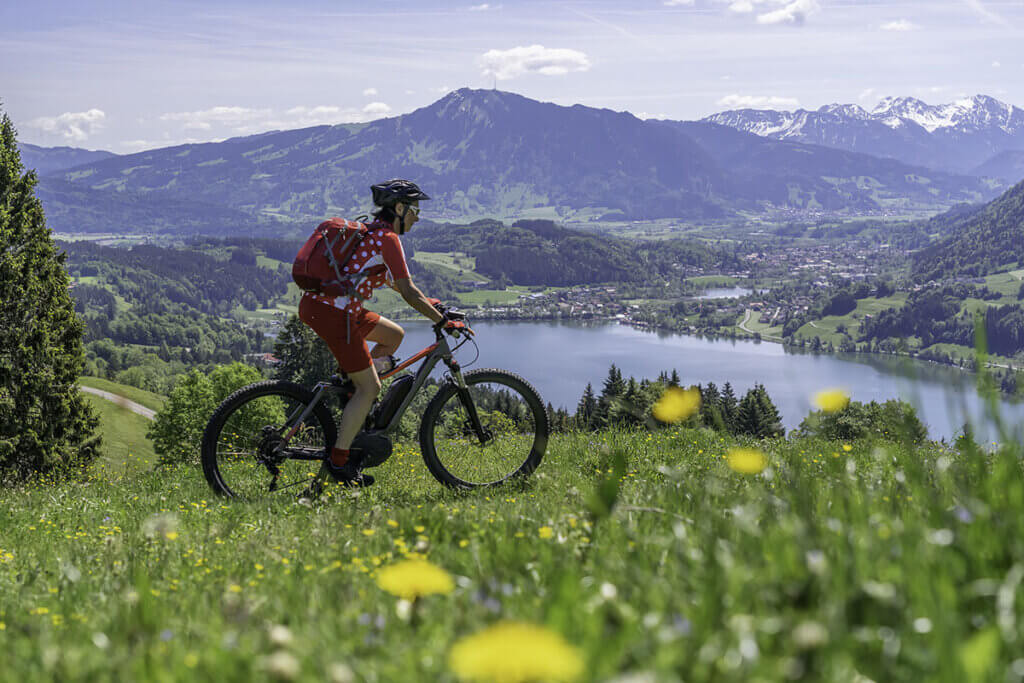
Very few riders want to use their electric mountain bike exclusively off-road, but also for longer tours and family outings. Of course, these also take place on normal roads, which is why it is important that the bike meets the requirements of the Road Traffic Regulations (StVO). In case the terrain is not that demanding or the path is rather sloping, it is possible to switch off the motor assistance. The drives offer different levels of assistance, depending on how hard cyclists want to pedal themselves.
Well-known brands
Scott | Focus | Bulls | Rose | Cube
The different drive systems on electric mountain bikes
As with all other e-bikes, manufacturers of off-road bikes offer three types of electric motors. “E-bike” is often used as a generic term for all three, but according to the technical definition it is not quite correct.
E-bikes
E-bikes are bicycles whose built-in motor can be switched off if desired. The motor has nothing to do with the bottom bracket, so it runs even when riders are not pedalling. Basically, e-bikes are scooters that look like bicycles. The maximum permitted speed is 25 kilometres per hour and operation is only allowed from the age of 16. Just as with scooters, road traffic regulations require e-bikes to be licensed, which puts off many potential buyers. Many think that every bike with a motor is an e-bike. However, this type of bike is rarely represented on the market.
Pro points
- Motor support even without pedalling
Drawbacks
- Compulsory registration
- Limited choice of models
- Speed limit of 25 km/h
Pedelecs
Pedelecs are the most common type of bicycle with a motor. The term stands for “pedal electric cycle”. When people talk about e-bikes, they often mean pedelecs. The assistance provided by the electric motor only kicks in when riders apply power to the pedals. To avoid compulsory registration, the assistance only works up to a speed of 25 kilometres per hour. Riding faster is possible, but only permitted without motor assistance. The motor assistance can be regulated in several stages and can be switched off completely if desired. Before the law, pedelecs are identical to “normal” bicycles, so riding on cycle paths is permitted. Although not required by law, wearing a helmet is recommended.
Pro points
- Motor assistance can be switched off and adjusted at any time
- No special permit required
- Suitable for all cycling tours
Drawbacks
- High own weight
- Expensive
S-pedelecs
S-pedelecs are fast pedelecs. The speed is not limited to 25, but to 45 kilometres per hour. Due to the higher speed, there are more legal regulations. In addition to a moped test certificate and insurance, a suitable safety helmet is also required for operation. A driving licence class AM or a normal car driving licence is sufficient. As mopeds, they may be ridden from the age of 16. Unlike classic pedelecs, however, S-pedelecs have no business on cycle paths. This must be observed when riding with riders of other types of bikes in order to avoid fines.
Pro points
- Higher speed
Drawbacks
- No approval for cycle paths
- Compulsory helmet
The requirements of electric mountain bikes
Due to off-road use, suspension is an important purchase criterion for mountain bikes. A suspension fork has long since become standard. It makes it much easier for the front wheel to absorb shocks, making riding on rough terrain much more comfortable and safe. Many models offer the option of deactivating this suspension for road riding. While the rear triangle is additionally suspended on so-called fullys, hardtails do not have this damping element.
Areas of use for hardtails
Hardtails are very well suited for casual rides on field or forest paths. On roads and in moderate terrain, hardtails offer a more direct and thus faster ride due to their rigid rear triangle. They are also usually lighter because they require fewer complex components. This is also the reason why hardtails are cheaper than comparable fullys in otherwise equally equipped models.
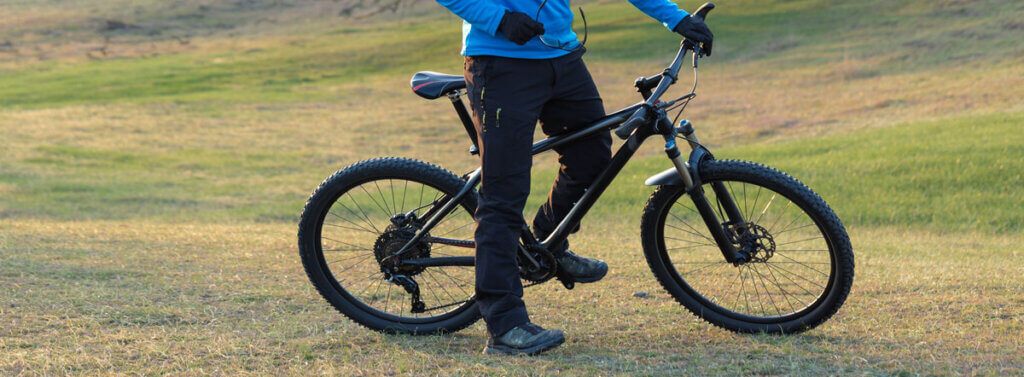
Areas of use for Fullys
If challenging single trails and descents in difficult terrain are part of the regular programme, riders are well advised to choose “full suspension bikes” – also called fullys. Due to the suspension, the rear wheel has better contact with the ground and thus more traction and safety. On very long tours lasting several days, especially in mountainous regions, the full-suspension e-offroad bikes can show off their strengths to the full. One disadvantage, however, besides the somewhat higher price, is the maintenance effort. This applies not only to the additional shock absorber, but also to the associated moving parts of the rear triangle. Just as with the suspension fork, riders can block the rear damping with a lever, for example when riding on paved roads.
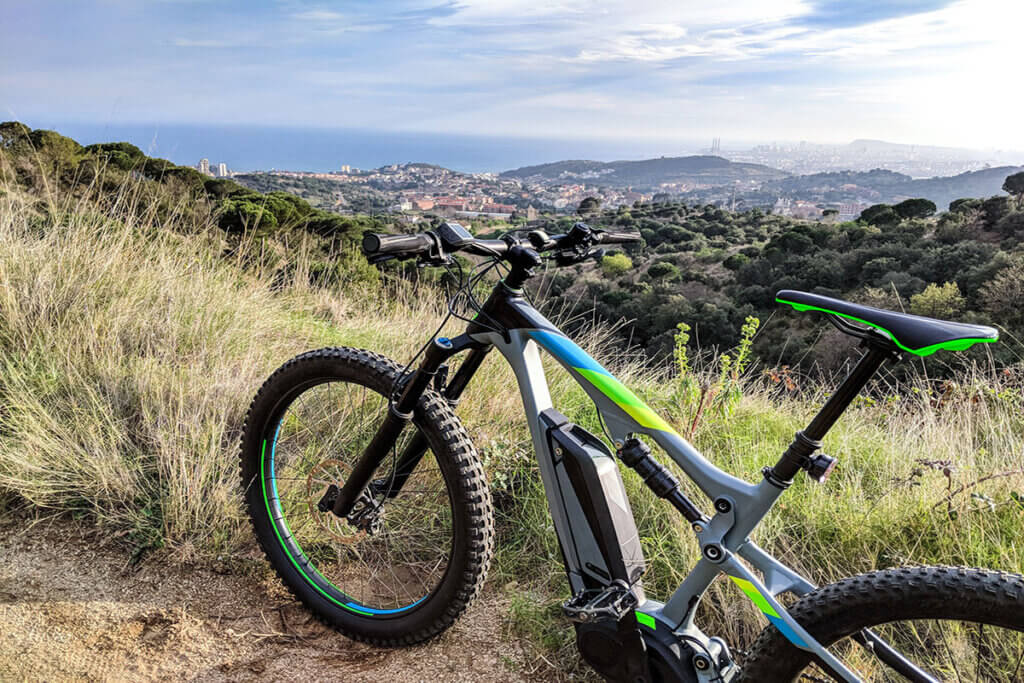
Other important criteria when buying an e-mountain bike
Suspension is not everything. As a rule of thumb, a well-equipped hardtail will certainly give the rider more pleasure than a poorly equipped fully. There are other important features that buyers of an e-terrain bike should definitely consider.
Wheel and frame size
The height of the bike must fit the height of the user to allow for comfortable safe and efficient riding. While mountain bikes with 26-inch wheels used to be commonplace, the trend is increasingly towards 29-inch or 27.5-inch tyres. Apart from that, e-mountain bikes come in about four to five different frame sizes to cover all needs. Some manufacturers have integrated a size calculator on their website. Here, consumers can find out which frame size is the right one by entering their body measurements.
Maximum permitted total weight
Most models are designed for a total weight of up to 120 kilograms. This is the guideline value, but some models go beyond this and offer support of up to 180 or sometimes even 200 kilograms. This limit must be observed at all costs, because on some bikes the motor will not start if the permissible total weight is exceeded.
Dead weight
Due to the motor, electric mountain bikes are significantly heavier than ordinary bicycles. As a rule, the tare weight of the bikes is in the range of 25 to 30 kilograms. Only if the bike is transported frequently, for example on a roof rack, is the weight a decisive criterion.
Motor
Manufacturers of e-mountain bikes rely on two different types of drive: either a mid-mounted motor at the bottom bracket or a rear motor at the rear wheel hub.
Most models have a bottom bracket motor. The reason for its popularity is that the motor unit is largely protected from external influences there. In addition, the riding experience does not change because the extra weight is pretty much at the centre of gravity of the wheel design. All motors have an upper limit of 250 watts, as the bike is only still considered a pedelec below this limit.
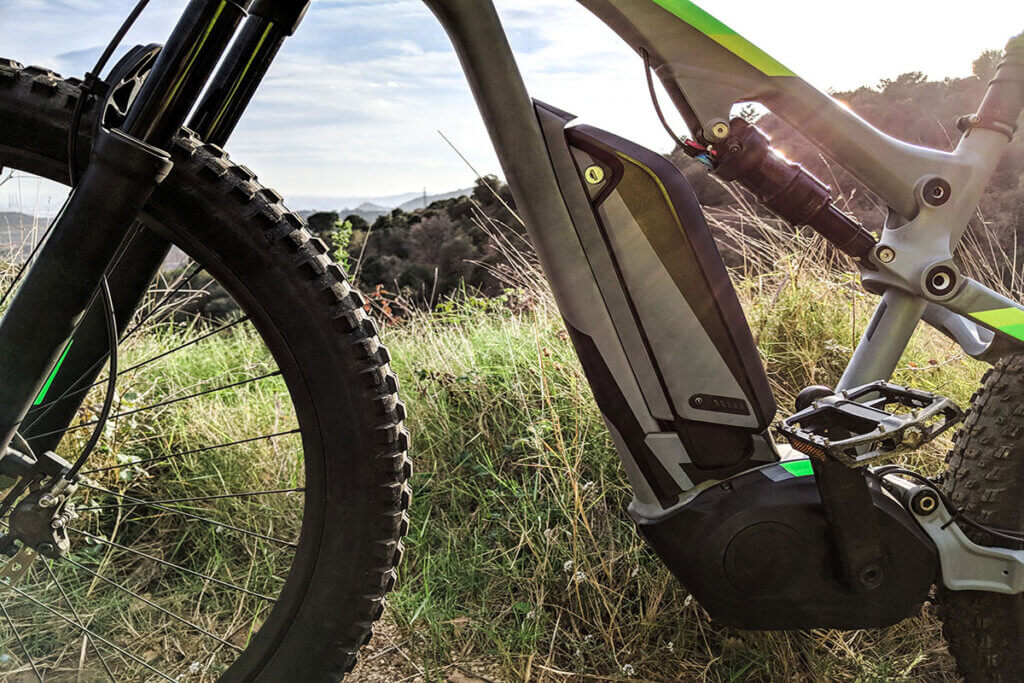
Gear system
There are two types of gears: hub gears and derailleur gears. A hub gear usually has fewer gears to choose from, but has the advantage of not getting as dirty as the sprockets and rear derailleur of a derailleur. On the other hand, the derailleur offers a wider range of gears. Both very steep passages and fast descents are better possible with it. Derailleur gears are available in a mechanical version with shift cables as well as electronically. Electronic gears are sometimes faster and require less effort, but they are expensive and sensitive when used in tough terrain.
Battery
The most important criterion of the battery is its capacity: the higher the capacity, the longer cyclists can ride with motor assistance. Manufacturers usually specify watt-hours (Wh), sometimes also ampere-hours (Ah) or volts (V). Values between 300 and 600 watt-hours are common.
A stated range of the battery in kilometres or hours should be taken with a grain of salt, as it depends on the riding style. Wind and weather also play a role in the durability of the battery charge. To avoid unpleasant surprises on the road, every battery has a charge indicator similar to the fuel gauge in a car. If the battery suddenly runs out on the road, cyclists can pedal home as normal.
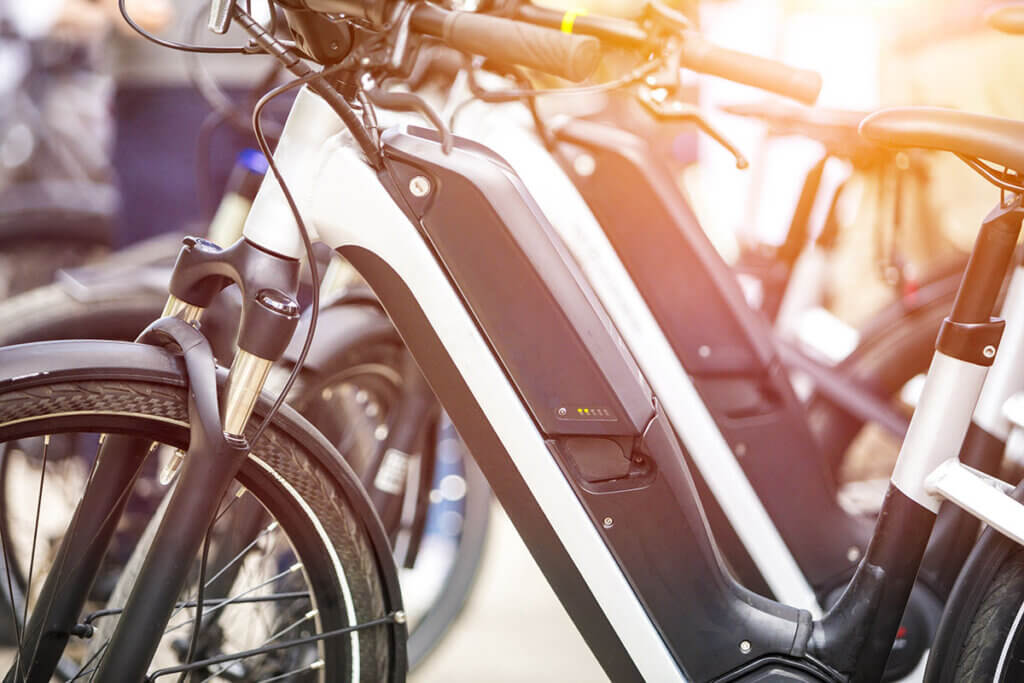
The greater the capacity of the battery, the longer the charging time. Due to the long service life of today’s lithium-ion batteries of 7,000 to 10,000 charging cycles, battery replacement is only necessary in exceptional cases.
Brakes
Rim brakes have become obsolete on mountain bikes and are practically no longer used on new models. Instead, manufacturers rely on disc brakes. These are available in mechanical or higher-quality hydraulic versions. Disc brakes are much more reliable, especially in wet and dirty conditions. The service life of the wheels is longer because the pads do not wear down the brake flank of the rims over time. In addition, less force is needed to pull the brake lever on hydraulic systems and the braking distance is shorter.
Brake discs have different diameters. As a rule of thumb, the larger the brake disc measures, the stronger the braking effect. Discs with a diameter of 203 millimetres are almost standard at the front, while some manufacturers use 180-millimetre discs at the rear.
Other equipment features
The most important component of a bicycle is the frame – this also applies to electric mountain bikes, of course. Aluminium has proven itself as the frame material, although more expensive bikes are made of carbon. This material has the advantage of being lighter and stiffer, but can suffer irreparable damage in heavy crashes. However, given the higher overall weight of electric mountain bikes, the somewhat lighter frame does not play as big a role as, for example, on road bikes.
Pre-mounted mudguards are usually not provided by the manufacturer, but there are inexpensive external solutions for mounting on the rear triangle, seat post or down tube.
According to the German Road Traffic Regulations (StVO), a light system is also required for riding in road traffic during the day, but it does not necessarily have to be permanently mounted. Here there are lamp set offers from specialists for bicycle accessories with which buyers can retrofit their bike to comply with the StVO. The same applies to reflectors.
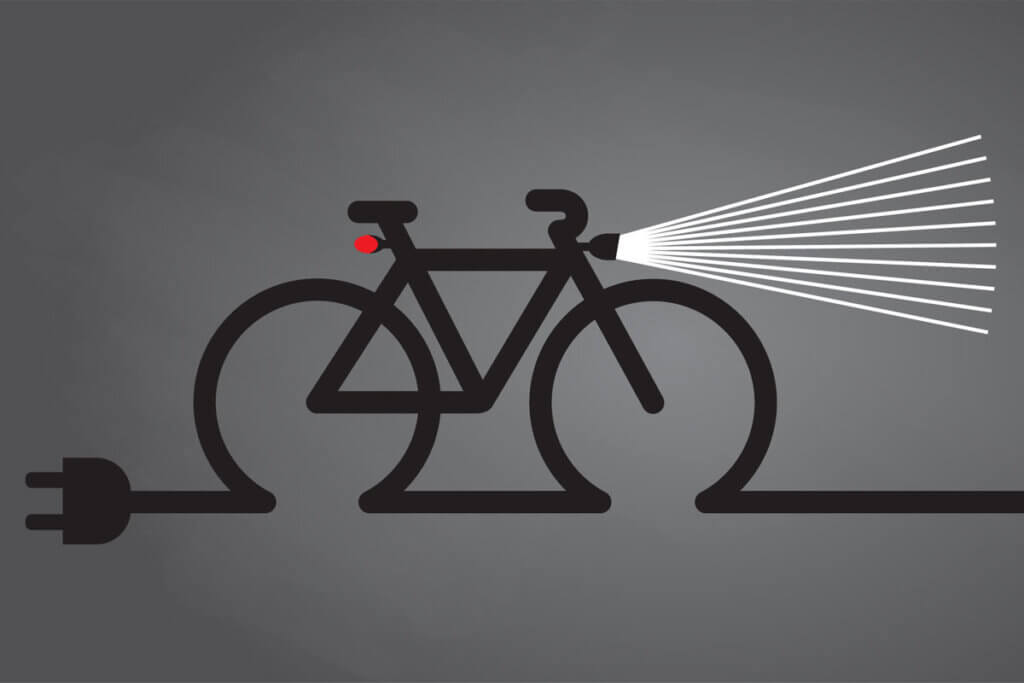
Because of their sporting purpose, luggage racks are not part of the basic equipment of electric mountain bikes.
A starting aid is practical to bring the bike up to walking speed from a standstill, which helps on steep climbs after dismounting.
The handlebar-mounted LC display provides important riding data such as speed, kilometres covered and battery charge. More expensive bikes also offer displays with integrated route navigation.
How much do you have to spend on an e-mountain bike?
As with all other types of bike, the price limit is open at the top. Some high-quality e-mountain bikes cost as much as a small car. In the hardtail category, the price range of well-equipped bikes starts at around 2,000 euros. For fullys, prices are somewhat higher, with 2,500 euros or more due. Be careful with presumed bargains and offers: In these cases, brand-name components are often not installed. Many workshops also refuse to repair discount bikes, and with good reason.

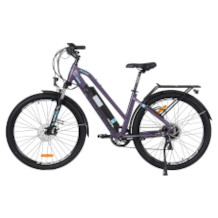
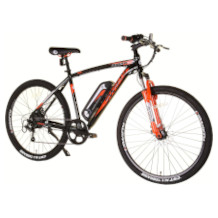
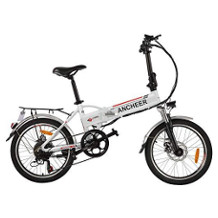

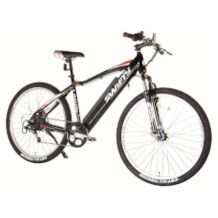
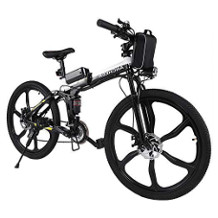
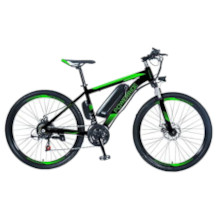
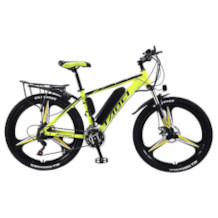


 444 reviews
444 reviews